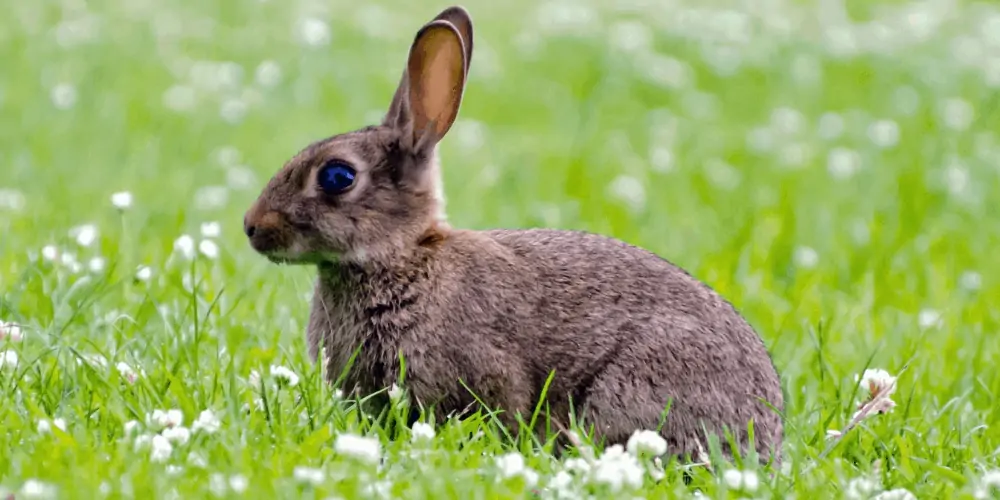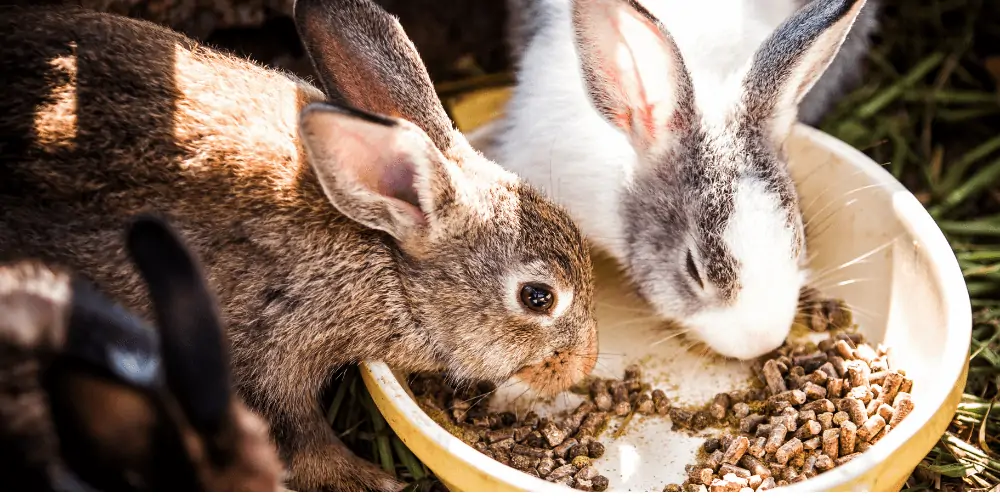Have you ever seen a rabbit hopping about in the snow and wondered how it survives the bone-chilling cold? As rabbit owners or enthusiasts, understanding a rabbit’s tolerance to cold weather is essential. In this blog post, we address the crucial question, “can rabbits freeze to death,” and explore comprehensive preventive measures.
Rabbits can freeze to death, especially in extreme cold, damp, windy conditions, or without adequate shelter, bedding, nutrition, and care. Vulnerability increases with age and poor health. However, proper housing, a nutritious diet, and warming devices can significantly reduce the risk.
Understanding Rabbits and Cold Weather
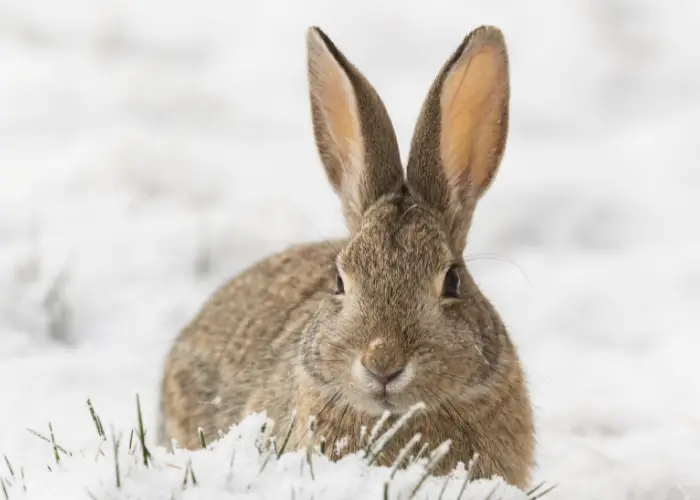
Rabbits are remarkable creatures, blessed with an innate ability to adapt to various climates.
From the snowy landscapes of the Rockies to the scorching sands of the Mojave Desert, you’ll find rabbits leaving their distinctive footprints in the ground.
But how do these mammals cope with such varied and often harsh weather conditions?
The mountain cottontail, for example, makes its home in the colder regions of North America. To survive the chilling winters, these rabbits undergo several physical changes.
One of the most noticeable transformations is their coat. As the days shorten and temperatures drop, the mountain cottontail grows a thicker, denser coat.
This luxurious fur provides them with the necessary warmth and blends with the snowy landscape, offering them a perfect camouflage against predators.
Yet, fur alone isn’t enough to stave off the cold. These wild rabbits burrow to further shield themselves from freezing temperatures.
These burrows, often a complex network of tunnels, provide a refuge from the harsh winter conditions.
Nestled beneath the ground, they are insulated from the frigid winds and snow, allowing them to conserve heat and energy during the coldest months.
Turning our gaze to the desert cottontail, it’s a different story. These rabbits are accustomed to the extreme heat of the arid Southwestern United States, but they, too, have to face chilly nights and occasional cold winters.
They manage these temperature drops through communal nesting, where they huddle together for warmth and bask in the sunlight during colder mornings to raise their body temperature.
Despite these fantastic adaptations in wild rabbits, our domestic companions do not possess the same resilience to the cold. Descendants of the European rabbit, domestic rabbits are genetically more accustomed to milder climates.
As such, they may not grow as thick a winter coat as their wild counterparts or have the instinct to burrow. Moreover, their controlled living environments often mean they lack the natural shelters or communal comfort that wild rabbits use for warmth.
Domestic rabbits also have a less diverse gut microbiome than wild rabbits. This means they might not be able to digest certain fibrous foods as effectively to generate heat.
All these factors make our beloved pet rabbits more susceptible to the cold and underscore our need to ensure their comfort and safety during the colder months.
How Cold is Too Cold for Rabbits?

Rabbits are well adapted to cold temperatures and can handle temperatures below almost 30°F (-2°C).
However, temperatures below 20°F (-6.7°C) may be too cold for rabbits, and extra precautions must be taken to keep them comfortable outdoors.
Wet conditions can quickly lower a rabbit’s body temperature, so it is important to check the hutch frequently to ensure it is clean and dry.
Monitoring the rabbit’s temperature is essential, ideally between 101.3-104°F (38.3-39.4°C). However, it is important to note that the body temperature of a rabbit can vary slightly between individuals and at different times of the day.
Stress or other factors can cause the temperature to be slightly elevated, up to 104°F or higher. Therefore, while the ideal temperature range for a rabbit is between 101.3-104°F (38.3-39.4°C), it is crucial to become familiar with the specific rabbit’s normal temperature range through regular monitoring and observation. This will help identify any significant deviations from their baseline temperature and allow appropriate action to be taken if necessary.
If the temperature drops below 100°F (37.8°C), immediate action should be taken to warm them up. If a rabbit is wet or showing signs of hypothermia, it is important to provide warmth and seek veterinary assistance.
Factors That Increase a Rabbit’s Risk of Freezing
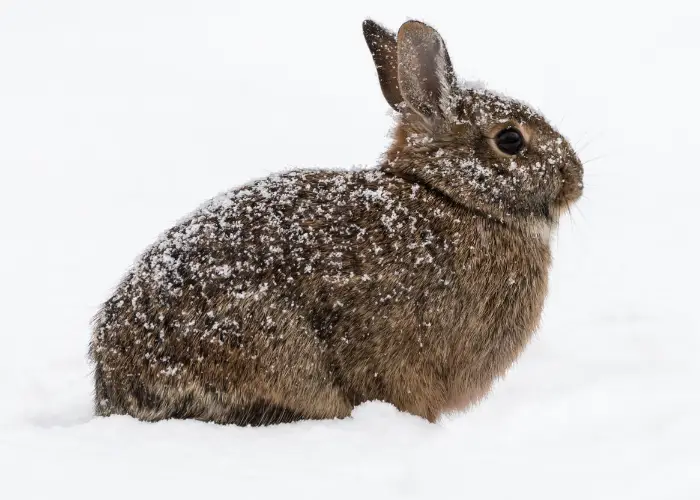
To fully comprehend the question “Can rabbits freeze to death,” it’s crucial to understand the factors that can increase this risk—from environmental conditions to the rabbit’s health status.
Temperature
Rabbits are comfortable in a wide range of temperatures, but extreme cold poses a serious risk. When temperatures drop below freezing (32°F or 0°C), a rabbit’s body struggles to generate enough heat. This puts the rabbit in danger of hypothermia, which can be fatal.
Housing
A rabbit’s living environment is pivotal in its ability to withstand cold. Outdoor enclosures without proper insulation expose rabbits to the full brunt of winter’s chill. Providing an adequately warm and sheltered space for your rabbit can significantly lower the risk of freezing.
Bedding
Apart from housing, bedding is another key aspect of a rabbit’s ability to stay warm. A generous layer of straw or hay allows rabbits to burrow and create a cozy nest. Insufficient bedding leaves the rabbit exposed and unable to maintain its body heat.
Diet
Food and water intake become even more crucial in cold weather. Rabbits need extra calories to generate heat to keep their bodies warm. Lack of sufficient food and water can weaken body temperature regulation, making them susceptible to the cold.
Health and Age
The health and age of a rabbit significantly affect its ability to handle the cold. Young, sick, or elderly rabbits may not have fully developed or compromised thermoregulatory systems. They are more vulnerable and may struggle to maintain an effective body temperature in the cold.
Understanding these factors helps rabbit owners create a safe and comfortable environment for their pets during the cold winter. This knowledge can differentiate between a healthy, happy rabbit and a potential tragedy.
How to Protect Your Rabbit from Freezing Temperatures
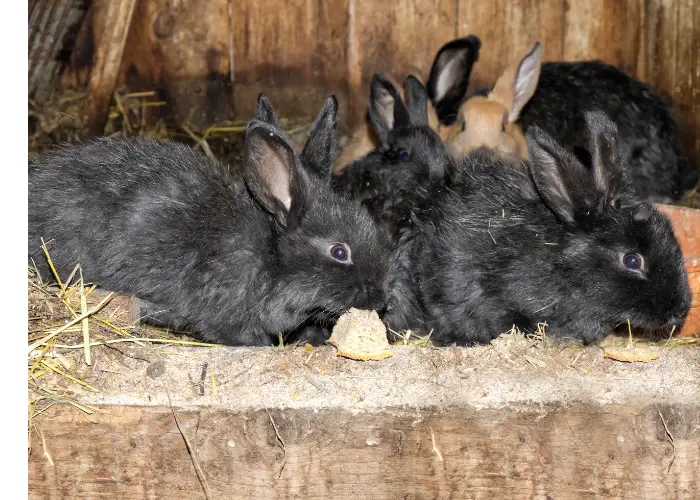
Extra Bedding
Adding extra bedding to their enclosure is one of the most effective ways to insulate your rabbit against the cold.
Lining the floor and walls with newspaper adds an extra layer of insulation, while ample hay provides a comfortable and warm bed for your rabbit.
Hay is a crucial element of a rabbit’s diet, and having it as bedding also encourages their natural burrowing behavior, helping to keep them warm.
Keeping Rabbits Dry
Wetness and cold are a dangerous combination for rabbits. If a rabbit’s fur gets wet, it can significantly lower its body temperature, increasing its risk of hypothermia.
Ensure your rabbit’s hutch is thoroughly waterproof, and check regularly for leaks. Providing them with a dry retreat within their enclosure can also prevent them from sitting on a damp surface, reducing their risk.
Regulating Temperature
While rabbits are more tolerant of cold temperatures than hot ones, extremely cold conditions can still be detrimental.
Avoid placing their enclosure in areas prone to cold drafts, and check their bedding regularly to ensure it is dry.
If you live where temperatures routinely fall below 15ºF (-10ºC), bringing your rabbit indoors during the coldest months might be safest.
Hutch Insulation
Raising the hutch off the ground can prevent dampness and cold from seeping up from the ground.
You can further insulate the hutch by lining the inside of the sleeping area with plywood, leaving a gap between the ply and the walls/floor that can be filled with roof insulation. This makes the sleeping area well-insulated, helping to retain heat.
Providing Warm Water and Shelter
A hot water bottle or a microwavable heating pad can provide a source of warmth for your rabbit to cuddle against.
Make sure to replace their water regularly to prevent it from freezing over. Opt for a water bowl rather than a bottle, as it is less likely to freeze and easier for your rabbit to drink from if it does.
Providing an additional layer of shelter with a simple tarp or plywood shield can help protect the hutch from wind and snow. Make sure there’s ample space for air circulation to prevent condensation.
Extra Food
Regulating their body temperature in cold weather requires extra energy from your rabbit.
Hence, providing them extra food during cold weather can give them the additional calories they need to stay warm.
Good options include rolled oats and black sunflower seeds, which are high in energy and well-loved by rabbits.
By taking these steps, you can significantly reduce the risk of your rabbit freezing in cold conditions.
Providing proper housing, a nutritious diet, and additional heat sources cannot be overstated to keep your rabbits safe and comfortable in the cold.
Common Myths About Rabbits and Cold Weather
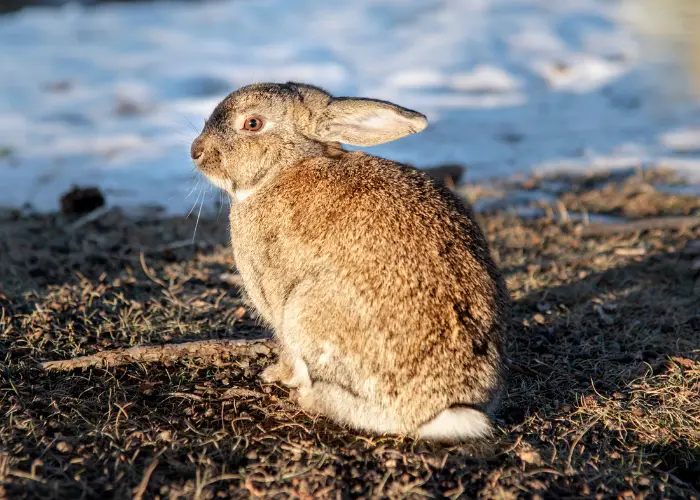
A common misconception regarding rabbits is that their furry coats exempt them from feeling the cold.
The adage, “Rabbits don’t feel cold because they have fur,” has been circulated, leading to misunderstandings about how rabbits experience cold weather.
In reality, while it’s true that a rabbit’s fur offers a degree of insulation, this doesn’t mean that they’re impervious to freezing temperatures.
The fur acts as an initial barrier against the cold, trapping air that warms up against the rabbit’s body heat and, thus, provides a layer of insulation.
However, if the temperatures are too extreme, if the fur gets wet, or if the rabbit’s health is compromised, the fur’s insulation might not be sufficient to keep the rabbit warm.
Moreover, domestic rabbits, particularly breeds with shorter hair, might not have as thick a coat as their wild counterparts.
In the wild, rabbits often grow thicker coats in response to cold weather, but this isn’t always the case with domestic rabbits, especially those living in consistently warm indoor environments.
Additionally, the amount of fur can vary significantly from breed to breed and even from rabbit to rabbit. Some rabbits have long, thick fur, while others have short, thin fur.
The thickness and length of the fur can also change with the seasons, with some rabbits shedding their fur in the spring and growing a thicker coat in the fall.
Therefore, while fur does provide some level of protection against the cold, it doesn’t give rabbits a free pass against freezing temperatures.
It is vital to remember that your rabbit’s fur density doesn’t eliminate the need for proper care and protection against cold weather.
Your rabbit still needs a warm and dry shelter, plenty of food, and access to unfrozen water to remain healthy and safe during the cold months.
So, always prioritize proper care, regardless of your rabbit’s fur density. Misunderstandings like these can potentially lead to severe consequences for our furry friends.
Conclusion
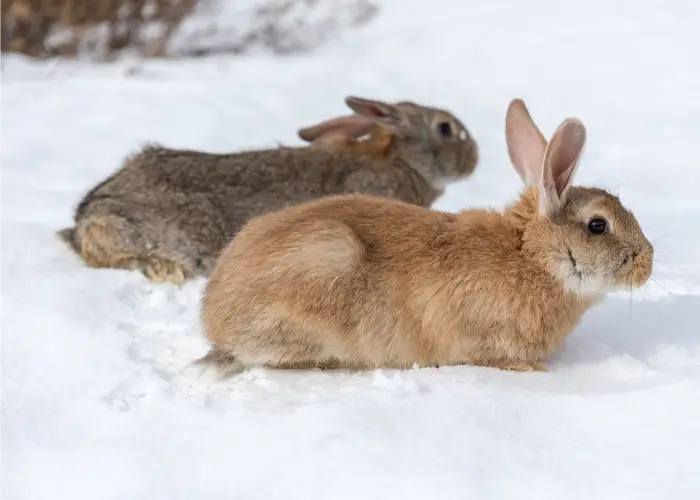
In summarizing the discussion, “Can rabbits freeze to death” carries a regrettable affirmative answer.
It’s vital to remember that the cold can pose a serious threat to rabbits, especially those left exposed to freezing temperatures without sufficient shelter or care.
Understanding the ideal temperature range for rabbits is crucial. Temperatures that are too low can cause discomfort and, in extreme cases, can be fatal.
As rabbit owners, we must be vigilant for signs of distress, including changes in behavior, eating habits, and physical symptoms.
Timely recognition of these signs can mean the difference between life and death in severe cold weather.
However, it’s not all grim. By providing proper care – appropriate housing with adequate insulation, a nutrient-rich diet, a dry and draft-free environment, extra bedding, and using warming devices when necessary -, we can effectively safeguard our rabbits against the cold.
Therefore, do not withhold this vital information. Share this post with fellow rabbit owners and spread awareness about this pertinent issue.
Doing so can ensure more rabbits are kept safe and comfortable during the chilly season.
As we conclude, let’s remember a simple but significant adage: a warm rabbit is a happy rabbit. Let’s do all we can to keep our furry companions warm and happy.
Did you know rabbits are not rodents but belong to their order called Lagomorpha?
Please find out more fascinating facts about our furry friends and explore whether rabbits are intelligent and can eat guinea pig food here.
REFERENCES:
1. RSPCA. (n.d.). Rabbit winter care advice. RSPCA. Retrieved July 20, 2023, from https://www.rspca.org.uk/documents/1494939/7712578/Rabbit+winter+care+advice+%28pdf+428KB%29.pdf/a46aefe5-1487-fade-6402-308d79106d8e?t=1559139783796#:~:text=Being%20cold%20and%20wet%20can,they%20keep%20warm%20and%20dry.


